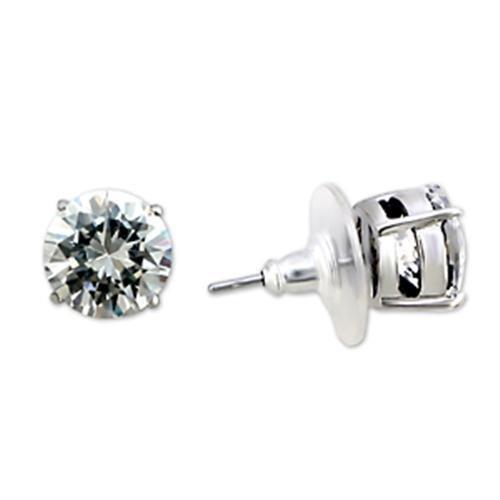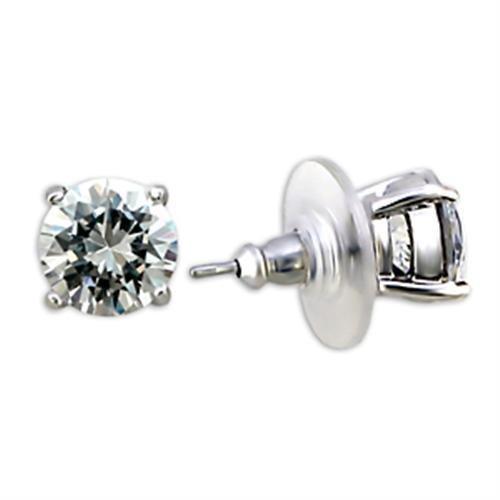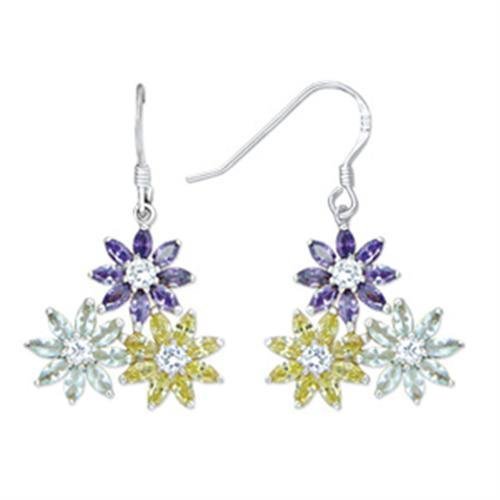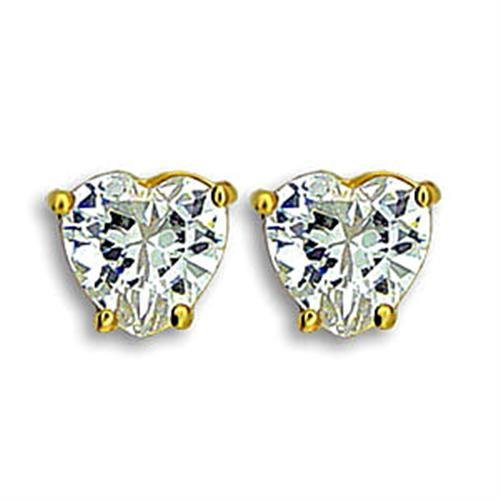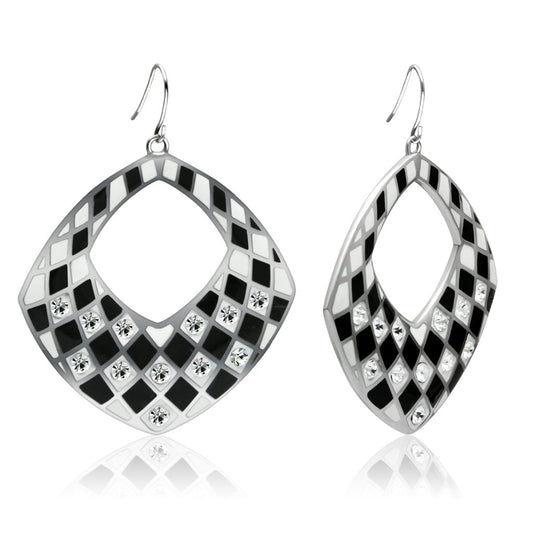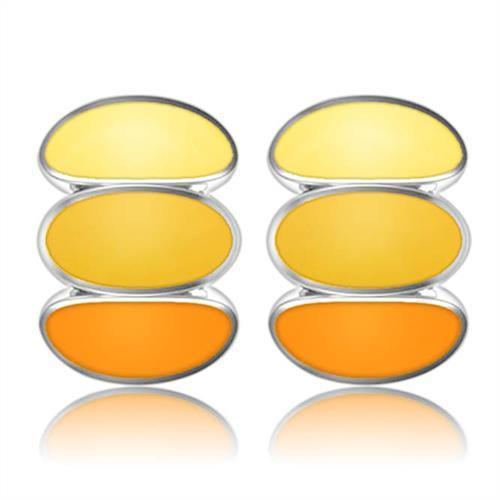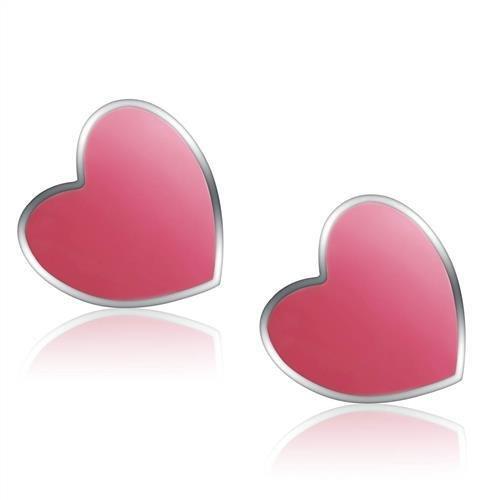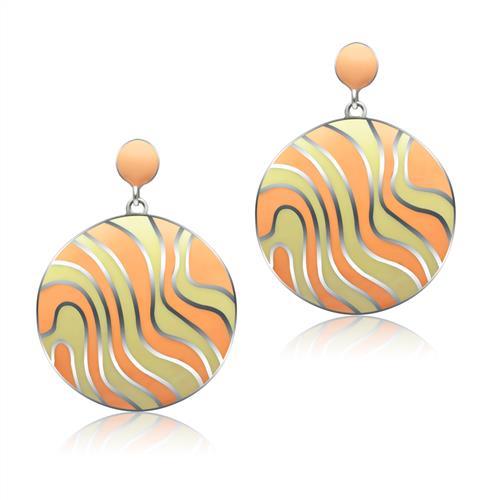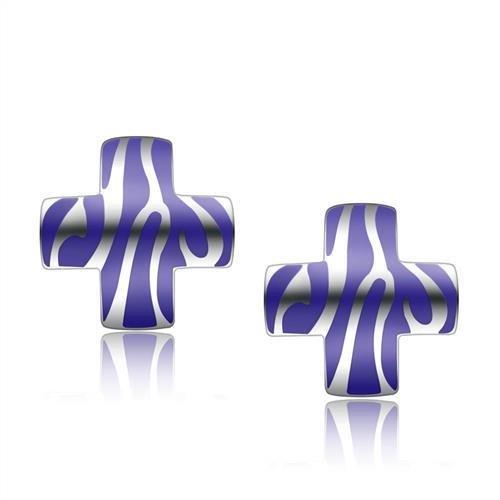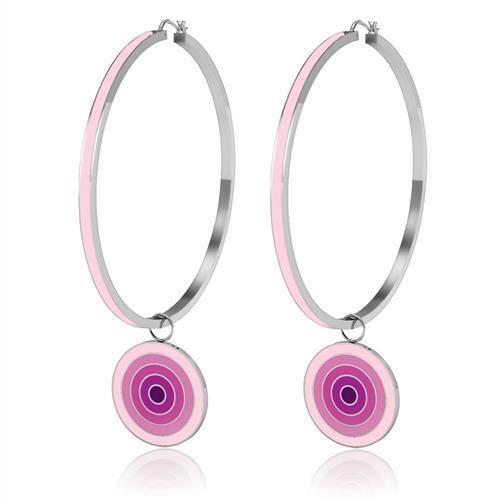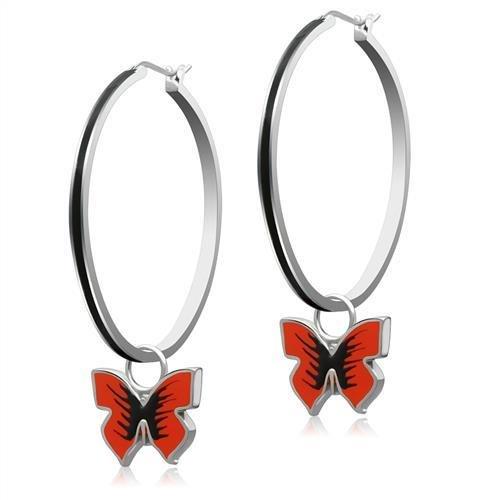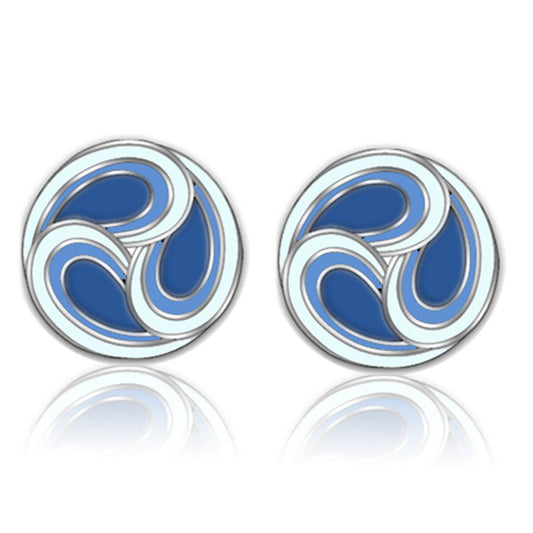Wearing a bracelet in the shower may seem harmless, but the reality is more complex. The combination of water, soaps, and chemicals can tarnish certain materials, diminish their shine, or even cause damage over time. In this article, we'll explore which materials can handle water exposure and provide actionable tips to keep your jewelry in excellent condition.
Summary
This guide covers the essential factors to consider when deciding whether to wear your bracelet in the shower. You'll learn:
- Which bracelet materials are safe in water, like waterproof jewelry and durable metals for shower use.
- How water exposure impacts gold-plated wear, sterling silver tarnish, and pearl damage in water.
- Why you should prioritize bracelet care tips for luxury pieces and chemical effects on jewelry.
- Practical advice on cleaning after water exposure, avoiding metal jewelry corrosion, and maintaining moisture-sensitive bracelets.
The Impact of Water on Bracelets
Water exposure, especially during a shower, interacts with various bracelet materials differently. While some metals are durable and resistant, others are prone to tarnish or corrosion. Additionally, organic materials like leather and gemstones can absorb water or become dull over time.
Which Bracelets Are Shower-Safe?
Certain materials hold up better under moisture and chemicals:
-
Solid Gold
Bracelets made of solid gold, including white gold options, resist tarnishing and rust. However, regular exposure to soap scum can dull their shine. -
Stainless Steel and Titanium
These are among the most durable metals for shower use, resistant to rust and corrosion. However, prolonged exposure to chlorine or harsh chemicals can eventually wear them down. -
Plastic and Silicone
Lightweight and waterproof, these materials are common in casual or everyday wear. While functional, they lack the elegance of fine jewelry.
For a selection of stylish options, check out our bracelet collection.
Materials to Avoid Wearing in the Shower
-
Gold-Plated Jewelry
A thin layer of gold on base metals like brass makes these bracelets highly susceptible to damage. Showering can quickly wear down the plating, exposing the underlying metal. Explore alternatives like brass bracelets for more durable wear. -
Sterling Silver
Sterling silver tarnishes easily in moist environments, making it unsuitable for frequent water exposure. Regular cleaning and proper storage can help mitigate these effects. For timeless styles, see our 925 Sterling Silver bracelets. -
Gemstone and Pearl Bracelets
Organic stones like pearls and softer gemstones are extremely moisture-sensitive bracelets. Water, combined with shower products, can discolor them or loosen their settings. -
Leather Bracelets
Leather absorbs water, leading to weakening, discoloration, or even mold growth. These require extra care and should always stay dry.
How to Care for Your Bracelets Post-Shower
If you accidentally expose your jewelry to water, follow these simple steps to minimize damage:
- Dry Immediately: Use a soft, lint-free cloth to pat the piece dry.
- Clean Regularly: Remove soap scum or residue with a mild cleaner appropriate for the material.
- Avoid Harsh Chemicals: Keep your jewelry away from chlorine and other strong agents found in swimming pools or household cleaners.
- Store Properly: Use a jewelry box or pouch to protect against air and moisture.
For luxury bracelet care tips, browse our pink bracelet collection for ideas that blend style and practicality.
Quote for Consideration:
“Protecting your bracelets from water isn’t just about preserving their appearance; it’s about extending their life as cherished accessories.”
Eco-Friendly Jewelry Care: Keeping Your Bracelets Safe and Sustainable
Caring for your bracelets isn’t just about maintenance—it’s about making conscious choices that align with eco-friendly practices. By adopting sustainable methods and selecting non-corrosive materials, you can protect your jewelry while contributing to environmental well-being.
Why Opt for Eco-Friendly Jewelry Care?
Eco-conscious jewelry care focuses on minimizing chemical use and extending the life of your favorite pieces. It’s especially important for moisture-sensitive bracelets like those made of sterling silver or organic materials. Sustainable care can help:
- Reduce Tarnish: Preventing sterling silver tarnish by avoiding harsh cleaning products.
- Preserve Materials: Protect delicate items like gold-plated wear or leather from unnecessary wear.
- Limit Waste: Caring for your jewelry well means less frequent replacements and lower environmental impact.
Practical Tips for Eco-Friendly Care
-
Use Gentle Cleaners
Opt for natural solutions, like a mix of mild soap and warm water, instead of abrasive chemicals. This approach is ideal for maintaining gold bracelet care. -
Air-Dry with Care
Avoid blow-drying or other artificial drying methods, which can weaken materials like leather or pearls. Instead, let pieces dry naturally in a shaded area. -
Avoid Excessive Polishing
Over-polishing, particularly with sterling silver, can wear down the material over time. Clean only when necessary to preserve the metal’s finish.
For more ideas on sustainable styles, explore our 925 Sterling Silver bracelets, which are timeless yet environmentally friendly.
The Role of Durable Metals in Jewelry Care
If you’re seeking low-maintenance options for everyday wear, consider bracelets crafted from shower-safe alloys like stainless steel or titanium. These materials offer:
- Resistance to Corrosion: Ideal for frequent water exposure, as they resist rust and tarnish.
- Hypoallergenic Properties: Great for sensitive skin, especially when avoiding chemical effects on jewelry.
- Long-Lasting Durability: Perfect for active lifestyles or regular use in humid environments.
For a durable and chic addition to your collection, check out our White Metal bracelets, designed to handle both style and substance.
How to Handle Water Damage
Despite your best efforts, water damage can occur, especially with materials like pearls or gold plating. Here's how to recover your bracelet’s charm:
Immediate Steps After Water Exposure:
- Rinse with Clean Water: If your bracelet comes into contact with chemicals like chlorine, rinse it thoroughly with plain water.
- Dry with a Soft Cloth: Prevent spotting or corrosion by patting the bracelet dry immediately.
Long-Term Recovery Tips:
- Polish with Care: Use a jewelry-specific polishing cloth to restore shine. This is particularly effective for metal jewelry corrosion.
- Professional Cleaning: For luxury pieces or severe discoloration, consult a professional jeweler.
Explore our pink bracelet collection for pieces that combine delicate charm with practical care needs.
Why Chemicals and Jewelry Don’t Mix
One of the leading causes of jewelry damage in showers is exposure to chemicals like soaps, shampoos, and conditioners. These substances can:
- Strip Gold-Plating: Worn gold-plated bracelets often reveal their base metal after repeated exposure.
- Dull Gemstones: Build-up around gemstones, such as pearls, can diminish their sparkle and weaken their setting.
- Weaken Leather: Organic materials like leather absorb chemicals, causing them to dry out or discolor.
To preserve the integrity of your jewelry, remove your bracelet before using harsh products or swimming in chlorinated pools.
Quote for Inspiration:
“Jewelry care isn’t just about maintenance—it’s about valuing the craftsmanship and stories behind every piece.”
Waterproof Jewelry and Everyday Wear: The Perfect Balance of Beauty and Resilience
Jewelry designed for durability and style can simplify your daily routine, offering worry-free wear even in challenging environments. Whether you're searching for waterproof jewelry or tips to maintain your everyday favorites, choosing the right materials and following smart care practices is key.
Benefits of Waterproof Jewelry
Investing in waterproof jewelry offers a range of practical advantages, especially if you're frequently exposed to water. These pieces are typically crafted from shower-safe alloys or durable materials like stainless steel and titanium.
Key Benefits:
- Minimal Maintenance: Resistant to tarnish and corrosion, these materials require less upkeep.
- Versatility: Ideal for active lifestyles, waterproof jewelry transitions effortlessly from gym to work to home.
- Long-Term Value: These durable designs are built to last, reducing the need for frequent replacements.
Explore our bracelet collection for options that combine durability with timeless style.
Everyday Wear Jewelry Advice
For pieces you wear daily, like bracelets, it's essential to strike a balance between convenience and care. Here are some tips to help you keep your favorites in pristine condition:
Materials to Prioritize:
- Stainless Steel: Perfect for daily wear, offering resistance to scratches and tarnish.
- Solid Gold: Durable and elegant, although occasional cleaning helps maintain its shine.
- Hypoallergenic Metals: Ideal for sensitive skin, preventing irritation even with prolonged wear.
Best Practices:
- Rotate Your Pieces: Avoid overusing one bracelet by rotating between several styles to reduce wear and tear.
- Inspect Regularly: Check for loose clasps or signs of damage to catch issues early.
- Avoid Excessive Moisture: While durable, even the best materials benefit from limited water exposure when possible.
Browse our White Metal bracelets for versatile options that suit any occasion.
How to Select the Right Bracelet for Your Lifestyle
When choosing a bracelet, consider your daily activities and the environment you'll wear it in. Here’s a quick guide:
-
For Everyday Use
Look for materials like stainless steel or titanium, which are resistant to scratches, tarnish, and water exposure. -
For Special Occasions
Opt for more delicate pieces, such as gold-plated or gemstone-adorned bracelets, that require less exposure to harsh conditions. -
For Water Activities
Choose waterproof designs or hypoallergenic options that can withstand the effects of chlorine, saltwater, and other chemicals.
Discover designs that match your lifestyle in our pink bracelet collection.
Preserving the Beauty of Moisture-Sensitive Bracelets
While not all bracelets are designed for water exposure, a little extra care can go a long way in preserving their beauty:
- Store in a Dry Place: Use an airtight pouch or jewelry box to protect against humidity.
- Clean Gently: For delicate materials like leather or pearls, use a soft cloth and avoid water-based cleaners.
- Repair Promptly: Address any damage, such as cracks or loose stones, to prevent further deterioration.
If you’re curious about materials that require extra care, check out our 925 Sterling Silver bracelets for exquisite options that deserve attention to detail.
Final Thoughts: Caring for Your Bracelets
Whether you’re considering wearing your bracelet in the shower or searching for tips to extend its lifespan, understanding the impact of water exposure and proper care practices is vital. From bracelet water exposure to jewelry tarnish prevention, the choices you make can significantly impact the longevity and appearance of your treasured pieces.
“The best bracelets are more than accessories—they’re lasting investments in beauty and craftsmanship.”
To discover more stunning designs that match your care preferences, visit our bracelet collection. With the right materials and care routine, your jewelry will continue to dazzle for years to come.
Thank you for reading! For more tips and guides, explore the rest of our blog or shop for your next favorite bracelet today.
FAQ: Common Questions About Wearing Bracelets in the Shower
Here’s a quick guide to address additional questions you may have about wearing bracelets in the shower, ensuring your jewelry remains in its best condition.
1. Can stainless steel bracelets rust if worn in the shower?
Stainless steel is highly resistant to rust and corrosion, making it one of the most durable options for shower wear. However, prolonged exposure to chemicals like chlorine or saltwater can eventually dull its finish.
2. Is it safe to shower with bracelets that have gemstones?
No, gemstones like diamonds, sapphires, and rubies can lose their sparkle due to soap buildup, and softer stones like turquoise or opal may be damaged. Always remove gemstone-adorned bracelets before showering.
3. What happens if I accidentally shower with a leather bracelet?
Leather absorbs moisture, which can lead to weakening, discoloration, and even mold growth. If exposed to water, dry the bracelet immediately and apply a leather conditioner to restore its flexibility.
4. Can chlorine in shower water damage my bracelet?
Yes, chlorine is a harsh chemical that can erode metal finishes, tarnish sterling silver, and damage softer materials like pearls or wood. Avoid wearing your bracelet in chlorinated water whenever possible.
5. How often should I clean my bracelet if I wear it in the shower?
If your bracelet is made from materials that can handle water, such as stainless steel or titanium, clean it monthly to remove soap scum and maintain its shine. Use a mild cleaner and soft cloth for best results.
6. Are there any waterproof bracelets designed specifically for shower use?
Yes, certain silicone or stainless steel designs are marketed as waterproof. Check for product descriptions that specifically mention water resistance or shower-safe properties.
7. Can showering with gold bracelets reduce their value over time?
While solid gold doesn’t tarnish, repeated exposure to soap and water can dull its luster. Regular cleaning and polishing can restore its shine, but avoid unnecessary water exposure to maintain its long-term value.
8. Is it better to remove my bracelet before applying lotion or perfume?
Absolutely. Lotions and perfumes can contain chemicals that accelerate tarnishing or discoloration, especially in materials like sterling silver or gold plating.
9. Do bracelets with elastic bands get damaged in the shower?
Yes, elastic bands can lose their elasticity over time when exposed to water and heat. If your bracelet has an elastic component, avoid wearing it in the shower.
10. Can I wear my bracelet in a hot shower or sauna?
High heat and humidity can affect most materials, including metals and gemstones. Leather can crack, gold can lose its shine, and adhesives holding stones in place may weaken. Remove your bracelet before entering a sauna or hot shower.


